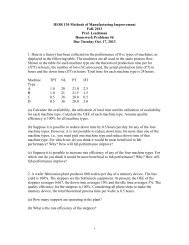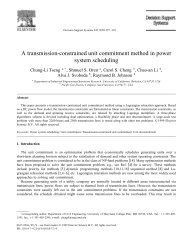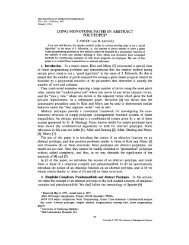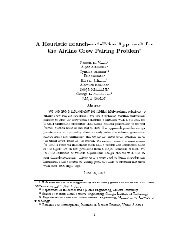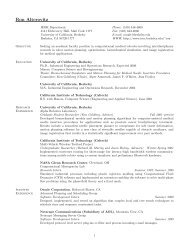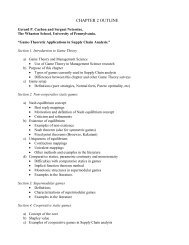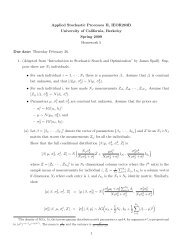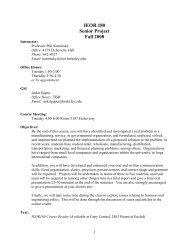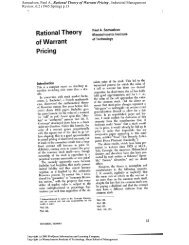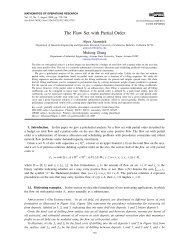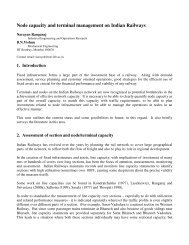IEOR 269, Spring 2010 Integer Programming and Combinatorial ...
IEOR 269, Spring 2010 Integer Programming and Combinatorial ...
IEOR 269, Spring 2010 Integer Programming and Combinatorial ...
Create successful ePaper yourself
Turn your PDF publications into a flip-book with our unique Google optimized e-Paper software.
<strong>IEOR</strong><strong>269</strong> notes, Prof. Hochbaum, <strong>2010</strong> 41<br />
19 The Chinese Checkerboard Problem <strong>and</strong> a First Look at Cutting<br />
Planes<br />
In this problem 10 we are given a st<strong>and</strong>ard Chinese checkerboard <strong>and</strong> three different types of diamond<br />
tiles (Figure 15). Each type of tile has a prescribed orientation, <strong>and</strong> each tile covers exactly four<br />
circles on the board. The Chinese checkerboard problem is a special case of the Set Packing problem<br />
<strong>and</strong> asks:<br />
What is the maximum number of diamonds that can be packed on a Chinese checkerboard<br />
such that no two diamonds overlap or share a circle?<br />
19.1 Problem Setup<br />
Let D be the collection of diamonds, <strong>and</strong> let O be a set containing all the pairs of diamonds that<br />
overlap; that is, (d, d ′ ) ∈ O implies that diamonds d <strong>and</strong> d ′ have a circle in common. For every<br />
d ∈ D, define a decision variable x d as follows.<br />
x d =<br />
{ 1 if diamond d is selected<br />
0 if diamond d is not selected<br />
To determine the total number of decision variables, we consider all possible placements for each<br />
type of diamond. Starting with the yellow diamond, we sweep each circle on the checkerboard <strong>and</strong><br />
increment our count if a yellow diamond can be placed with its upper vertex at that circle. Figure<br />
16 illustrates this process; a yellow diamond can be “hung” from every black circle in the image,<br />
<strong>and</strong> there are 88 total black circles. Using the same procedure, we find that there are 88 legal<br />
placements for green diamonds <strong>and</strong> another 88 for yellow diamonds. This brings the total number<br />
of decision variables to 264.<br />
19.2 The First <strong>Integer</strong> <strong>Programming</strong> Formulation<br />
We can formulate the problem as the following integer program, which is also known as the set<br />
packing problem.<br />
max<br />
∑<br />
d∈D<br />
x d<br />
subject to x d + x d ′ ≤ 1 for ( d, d ′) ∈ O<br />
x d ∈ {0, 1}<br />
for d ∈ D<br />
The optimal objective value for this IP is 27, but the optimal objective for the LP relaxation is<br />
132. This is a huge difference!<br />
19.3 An Improved ILP Formulation<br />
As it turns out, we can do much better by reformulating the constraints to make them tighter. We<br />
begin by observing that for many circles on the board, there are 12 different diamonds competing<br />
for that space. (See Figure 17.)<br />
10 Thanks to Professor Jim Orlin for the use of his slides <strong>and</strong> to Professor Andreas Schulz for this example.




